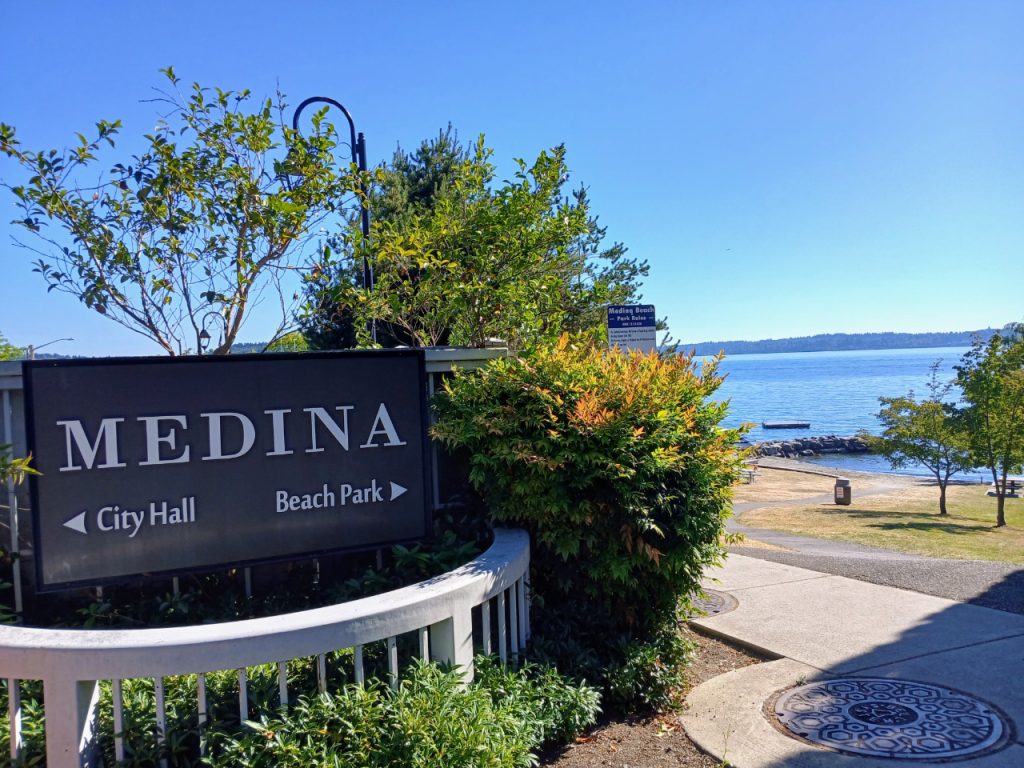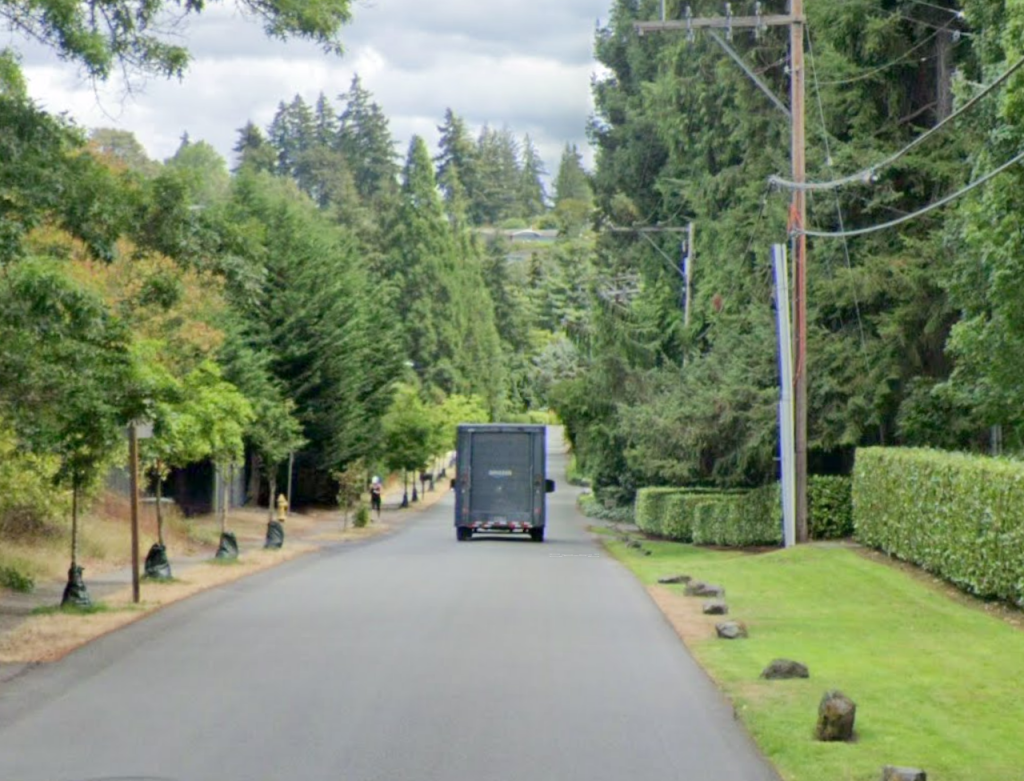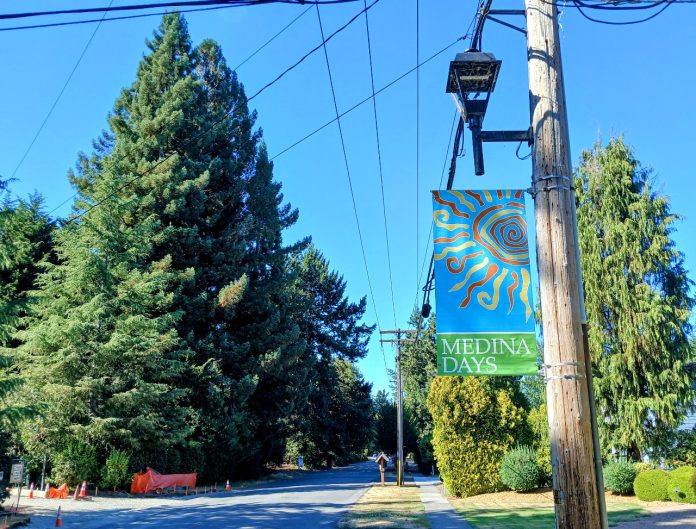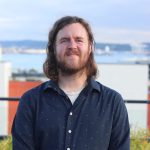A debate over “Complete Streets” within the exclusive Eastside enclave of Medina is shining a light on many of the inherent contradictions that come from trying to maintain a small slice of suburban living smack dab in the middle of a major metro area.
Incorporated in 1955 with a primary goal of maintaining large lots and to preserve the “residential character of the area,” Medina exists as an anomaly, wedged in between the fast-growing cities of Seattle and Bellevue along the shores of Lake Washington. As its bigger neighbors grapple with major issues like housing affordability and homelessness, Medina’s leaders remain focused on protecting an existing “sylvan character” for its 3,000 residents.
But no city can be a walled garden, and Medina is increasingly finding itself in conflict with broader statewide goals, along with its close by counterparts Clyde Hill, Yarrow Point, and Hunts Point.
Like any jurisdiction, Medina needs funding for transportation improvements. One source of those dollars is the state Transportation Improvement Board (TIB), which has previously awarded Medina grants to repave roads, build sidewalks, and convert street lights to more efficient LEDs. But to become more competitive for those dollars — and unlock a specific Complete Streets grant program with $30 million available in 2025 — Medina needs to adopt a Complete Streets ordinance, a move that would codify the desired expansion of infrastructure for people who walk, bike, and roll within city code.

Complete Streets ordinances are incredibly common around the state, in part due to these incentives baked into grant funding criteria. They simply require city staff to analyze any street set to undergo maintenance and determine whether upgrades that make the street safer and more accessible are feasible. Most have carve-outs allowing those potential improvements to be discarded if they’re too expensive, if right-of-way acquisition would be required, if there’s an adequate parallel route, or myriad other reasons.
This week, the Medina Council had an ordinance tee’d up for adoption, which would have allowed city staff to meet an August 15 deadline to apply for a Complete Streets grant. But members of the council weren’t assured the exceptions spelled out would be enough protection to allow Medina to maintain the “character” of its streets while still signing on to a policy that a state grant program was incentivizing.
“Much of Medina values the character of our current design, and I guess I’d like comment on, and clarification on, whether we are backing into a very urban street design,” Medina Mayor Jessica Rossman asked staff Monday as they had the ordinance in front of them. Put front and center was Overlake Drive, an nondescript city street in Medina with only a gravel sidewalk along one side. If the ordinance would prompt Medina to upgrade to a concrete sidewalk there, that was seen as the type of outside interference that couldn’t be accepted.
“If somebody were to read this from the outside, who’s maybe an advocate for using streets for something that is not as accessible now, for example a biking organization comes in while we’ve torn up Overlake Drive, and our intention is to keep it semi-rural or somewhat in keeping with the character that it is now,” Councilmember Heija Nunn asked. “Could somebody look at that Complete Streets ordinance […] and say, hey, but you guys are supposed to be developing to this standard?”

Medina’s Interim City Manager and Public Works Director both assured councilmembers that adopting a Complete Streets ordinance wouldn’t force the city to do anything that it wasn’t already planning to do.
“This is not a commitment to putting in an eight-foot sidewalk, or curb bulb outs,” Ryan Osada, Medina’s Public Works Director told the council. “This is aspirational.” Osada later called the Complete Streets ordinance “redundant” with existing city plans.
Implicit in the assurances of staff was something that’s been apparent in cities across the region for a long time: local Complete Streets requirements generally only carry as much weight as city leaders want to ascribe to them. But it became clear by the end of Monday’s discussion that to some councilmembers, the threat of outside interference was casting a shadow over the entire issue, with Complete Streets merely a stand-in for larger frustrations.
Medina had just wrapped up work implementing House Bills 1110 and 1337, which required Medina to allow at least three housing units on all residential lots in the city, including at least two accessory dwelling units (ADUs) or one duplex. To receive additional help implementing those changes, the City had accepted a grant from the state’s Commerce Department — but had bristled at the idea of being held to specific timelines as part of that grant agreement. The city had also expended a considerable amount of energy to ensure that parts of Medina were not covered by 2025’s transit-oriented development bill.
“This is one more example of the kind of bullying the state does as urbanism has burrowed its way into every department of government,” Councilmember Michael Luis said of the Complete Streets grant program, which has existed since 2015. “We’re a wealthy city, we don’t have to take every penny that they hang out there if it means we’re jumping through rules.”
“I could see being comfortable adopting this to facilitate grant opportunities. The challenge, I think, is that the language is so wholesome. Like it’s complete Complete Streets,” Nunn said.
In the end, the council wasn’t able to adopt an ordinance, and Medina won’t be able to compete for Complete Streets dollars this cycle. But the issue of whether a small city so close to major job centers like Bellevue, Seattle, and Redmond will be able to continue prioritizing neighborhood character over other more pressing regional issues certainly won’t be going away any time soon.
Ryan Packer has been writing for The Urbanist since 2015, and currently reports full-time as Contributing Editor. Their beats are transportation, land use, public space, traffic safety, and obscure community meetings. Packer has also reported for other regional outlets including BikePortland, Seattle Met, and PubliCola. They live in the Capitol Hill neighborhood of Seattle.


